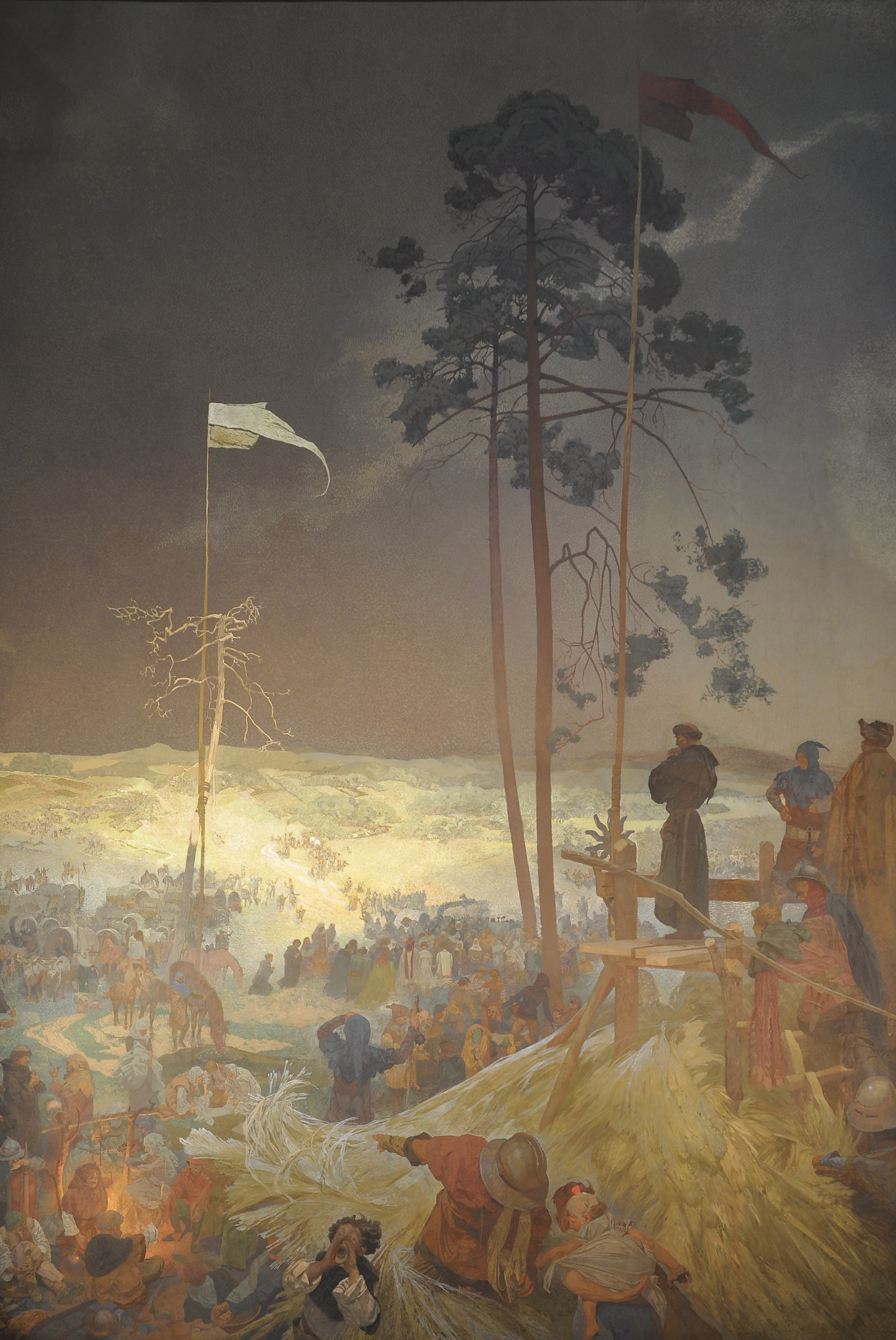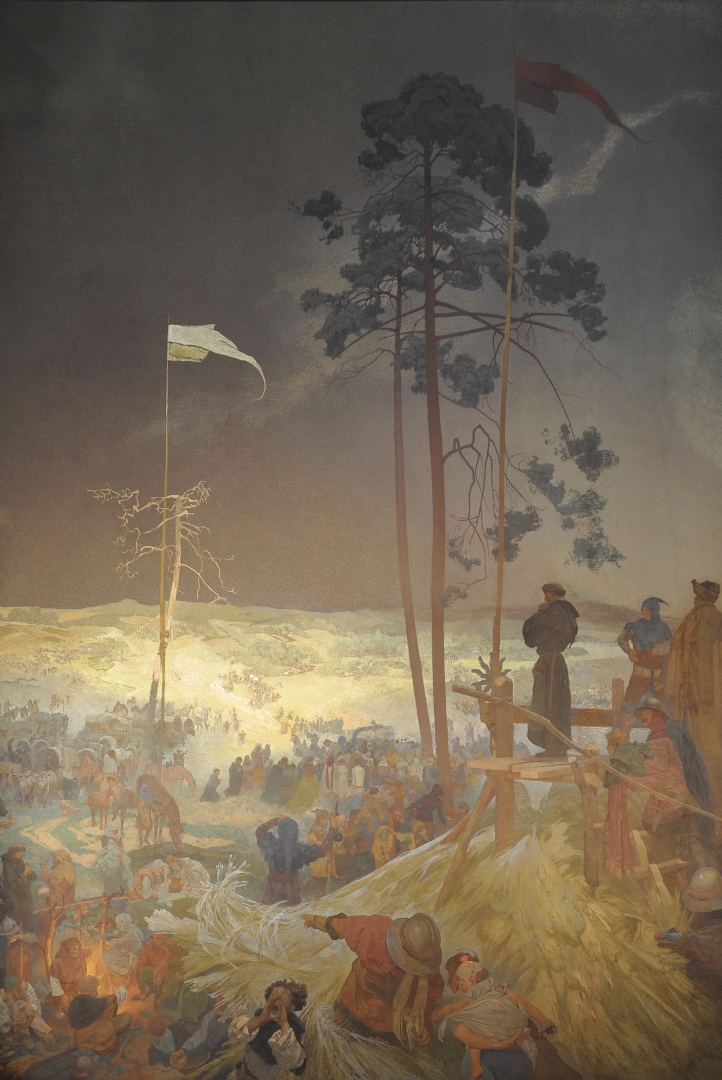MEETING AT KŘÍŽKY
3rd painting of the triptych "The magic of the word"
After the death of Jan Hus, the religious reform movement spread mainly in southern Bohemia. At first, its ideas were simple and non-violent. The goal was to establish the Kingdom of God on Earth. The initiators wanted to achieve this through a religious revival according to the spirit of the Gospel. The rallies took place on the hills: at Hradiště (later Tábor), at Beránek near Vožice, at Oreb near Třebechovice. The followers of the movement wanted to live as the first Christians. Pilgrimages were very popular, and they spread like a "spiritual contagion" among the commoners, and neither secular nor ecclesiastical authorities could do anything about it.
However, the radical branch from Tábor soon took over. On September 17, 1419, during a meeting on Bzí hill, the municipality of Tábor issued a written proclamation to all devoted Czechs. Václav Koranda Sr., a priest from Pilsen, was the author, and it read: "Brethren! Know that the vineyard has blossomed, but the goats want to eat it up, so don't walk holding sticks but weapons!" Another meeting, this time already armed, took place on September 30, 1419, on the hill behind Jesenice, called Na Křížkách. This place is still called U Křížků and is located 20 km south of Prague towards Benešov, near Velké Popovice.
Václav Koranda, who stands on a scaffolding built hastily above the thatched roof of the cottage, is preaching to the gathering. Down below stretches a camp of pilgrims that followed him from Pilsen. Under the pine trees, communion takes place at a long table. The pilgrims drink from the chalice, which later becomes a symbol of religious opposition. Some brothers water their horses; others wash clothes, prepare food and watch the procession coming from Prague. Ominous gloom covers the whole landscape; the only ray of light shines above the pilgrims and symbolically heralds the dawn of a new era.
The painting is overflowing with symbolism: the dry tree with the white banner signifies war and death, and the green pine and red banner represent life. The dark sky pierced by lightning embodies changes that have recently occurred: the death of Wenceslas IV, the first defenestration in Prague, and Jan Žižka forming the military division of Hussites. The whole picture should be perceived as a challenge and a call to arms, to the fight for the truth for which Master Jan Hus laid down his life.

